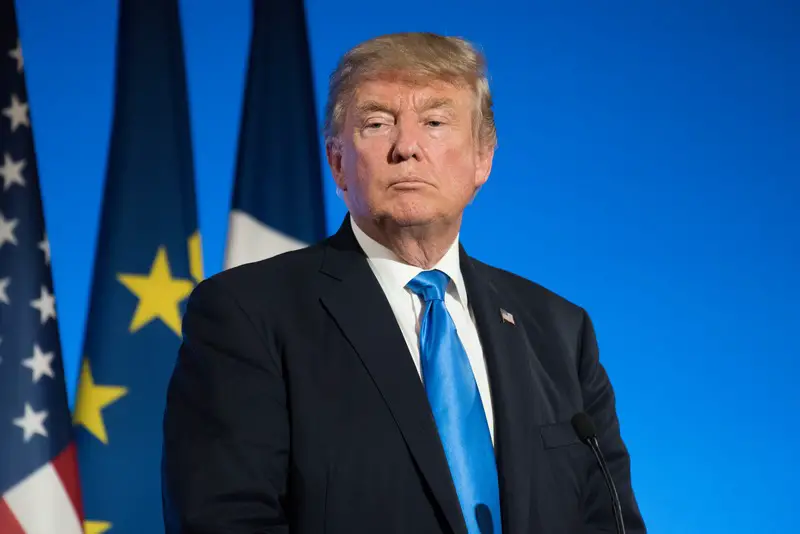Following President Donald Trump’s firing of Gwynne Wilcox, a Democratic member of the National Labor Relations Board (NLRB) in January 2025, a federal judge has demanded her reinstatement. This ruling represents a significant restraint on presidential authority over independent agencies.
U.S. District Judge Beryl A. Howell ruled on Thursday that the dismissal of Wilcox by Trump was “unlawful” and “therefore null and void.” Wilcox, nominated by former President Joe Biden and expected to serve until August 2028, was the first Black woman to sit on the NLRB.
“The President’s interpretation of the scope of his constitutional power – or, more aptly, his aspiration – is flat wrong,” Howell stated in her decision. “The President does not have the authority to terminate members of the National Labor Relations Board at will, and his attempt to fire plaintiff from her position on the Board was a blatant violation of the law.”
Wilcox’s firing by Trump in January resulted in the loss of the NLRB’s quorum, incapacitating the agency in charge of enforcing collective bargaining law and protecting workers’ ability to form unions. With only two members left on the five-member board, the NLRB could not make decisions.
Lawyers for the administration contended that NLRB members should be “removable at will to ensure democratic accountability.” However, the National Labor Relations Act clearly states that board members can only be terminated for “neglect of duty” or “malfeasance,” after being given “notice and hearing.” Judge Howell pointed out in her ruling that no president had ever attempted to dismiss an NLRB member before.
Howell, in her strongly worded opinion, criticized Trump’s understanding of presidential powers. She referred to a February 15 post by Trump on X where he stated, “He who saves his Country does not violate any Law.”
“A President who touts an image of himself as a ‘king’ or a ‘dictator,’ perhaps as his vision of effective leadership, fundamentally misapprehends the role under Article II of the U.S. Constitution,” Howell wrote.
Wilcox filed her lawsuit seeking reinstatement shortly after her January dismissal. “When Congress established the National Labor Relations Board almost 90 years ago, it made sure that the law would protect its independence from political influence,” Wilcox said in a statement at the time. “My removal, without cause or process, directly violates that law.”
Judge Howell’s decision is partially based on a 90-year-old Supreme Court precedent, Humphrey’s Executor v. United States, which restricts the president’s power to dismiss officials from independent, quasi-judicial agencies. In this 1935 case, the Court decided that the president’s removal power is limited for officials of independent regulatory agencies, and they can only be removed for reasons specified by Congress.
The Trump administration swiftly appealed the ruling, leading to a potential Supreme Court battle over executive power. The case is one of several recent court rulings determining that Trump unlawfully dismissed Senate-confirmed members of independent agencies, including officials from the Equal Employment Opportunity Commission and the Federal Election Commission.
Former NLRB member Wilma Liebman told HuffPost that Trump’s firing of Wilcox was “shocking” and endangered the agency’s role as an independent enforcer of the law. “It has the intent, I suppose, of trying to transform a neutral, objective, adjudicatory body into Trump’s henchmen,” Liebman said. “To me, it seems that the obvious first intent is to create chaos and make the agency inoperative.”
The ruling is part of wider efforts by the Trump administration to assert extensive executive control over independent agencies. These efforts include removing inspectors general and ordering White House review of regulations issued by independent agencies.
Legal pundits believe the Supreme Court’s conservative majority might be open to the argument that the president should have more authority over independent agencies. The Court could potentially revisit and narrow or overturn the Humphrey’s Executor precedent.
However, Judge Howell made it clear that until the Supreme Court changes existing law, current precedent supports Wilcox’s reinstatement. The judge’s ruling restores the NLRB’s three-member quorum, allowing the agency to resume its functions protecting workers’ rights to unionize and collectively bargain.
As the appeals process progresses, the final resolution could reshape the relationship between the executive branch and independent regulatory agencies for years to come.











